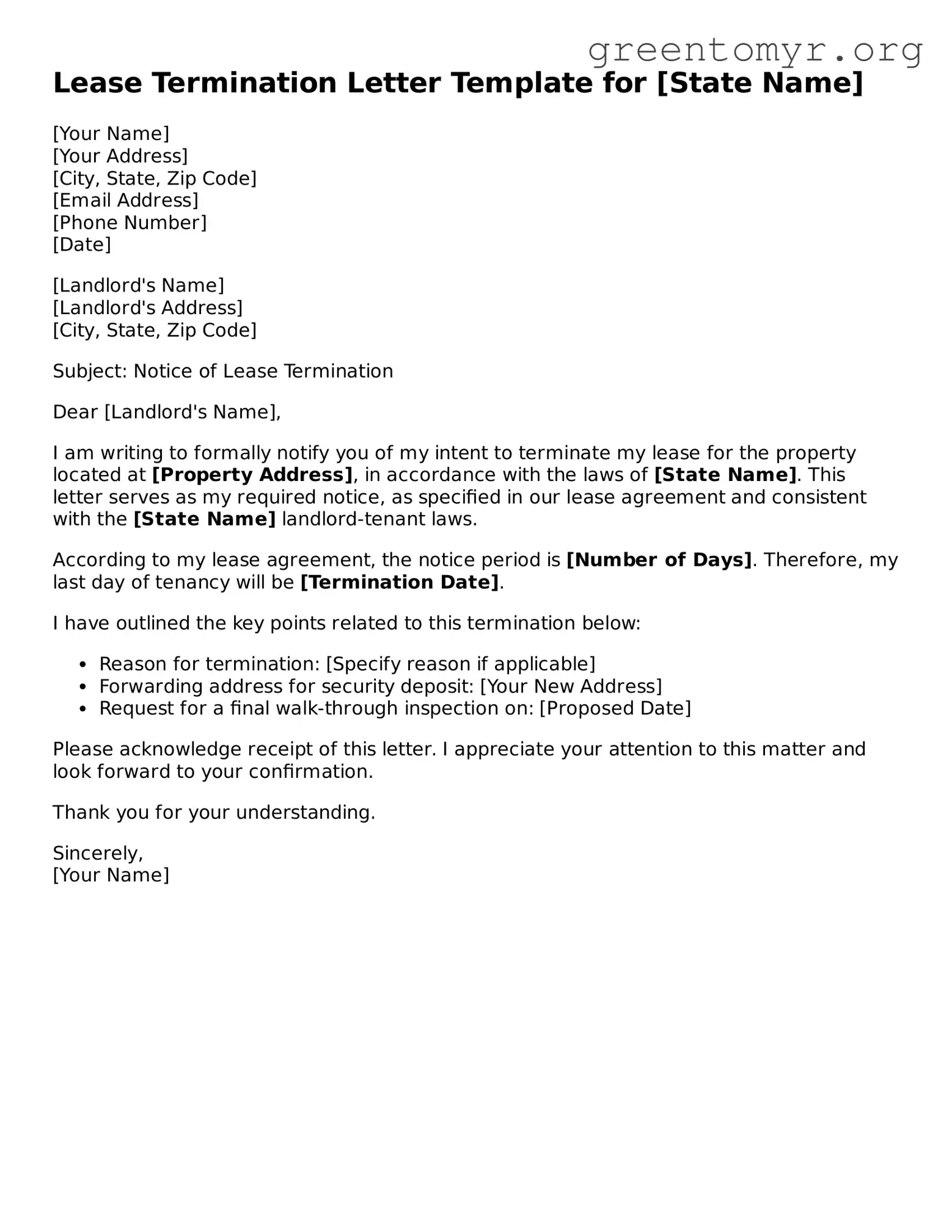Lease Termination Letter Template for [State Name]
[Your Name]
[Your Address]
[City, State, Zip Code]
[Email Address]
[Phone Number]
[Date]
[Landlord's Name]
[Landlord's Address]
[City, State, Zip Code]
Subject: Notice of Lease Termination
Dear [Landlord's Name],
I am writing to formally notify you of my intent to terminate my lease for the property located at [Property Address], in accordance with the laws of [State Name]. This letter serves as my required notice, as specified in our lease agreement and consistent with the [State Name] landlord-tenant laws.
According to my lease agreement, the notice period is [Number of Days]. Therefore, my last day of tenancy will be [Termination Date].
I have outlined the key points related to this termination below:
- Reason for termination: [Specify reason if applicable]
- Forwarding address for security deposit: [Your New Address]
- Request for a final walk-through inspection on: [Proposed Date]
Please acknowledge receipt of this letter. I appreciate your attention to this matter and look forward to your confirmation.
Thank you for your understanding.
Sincerely,
[Your Name]
